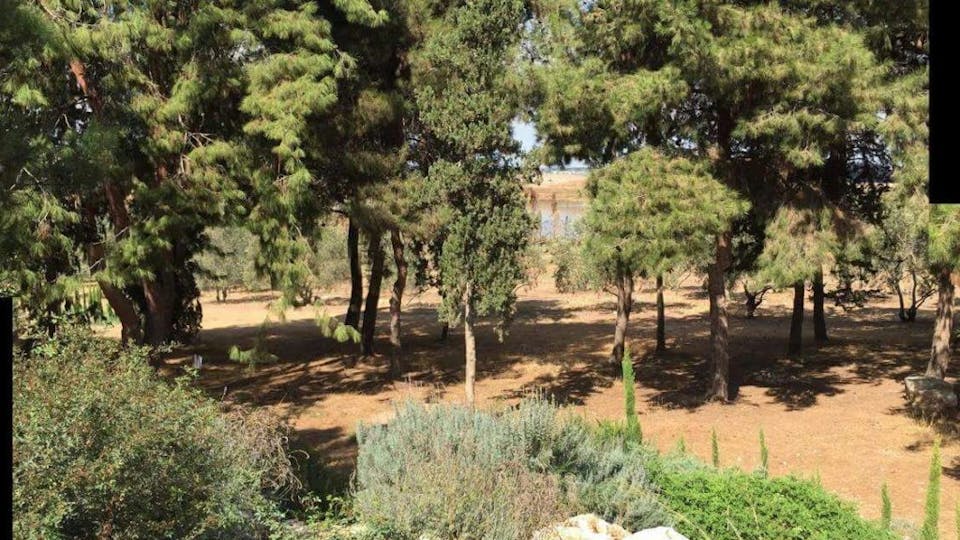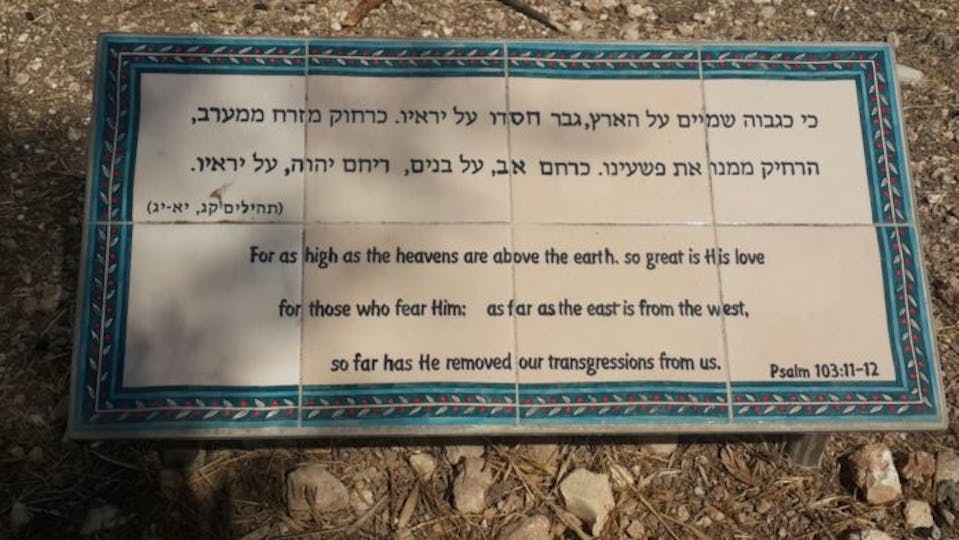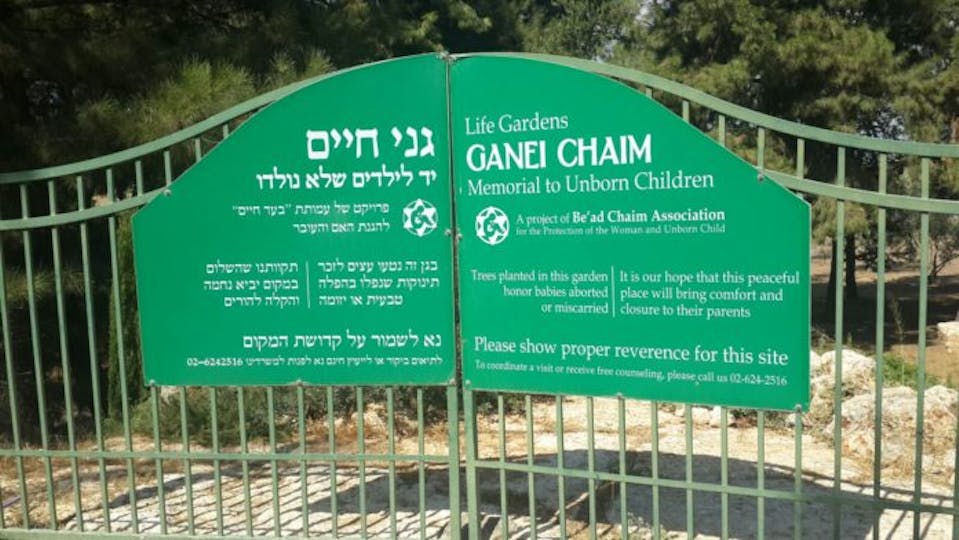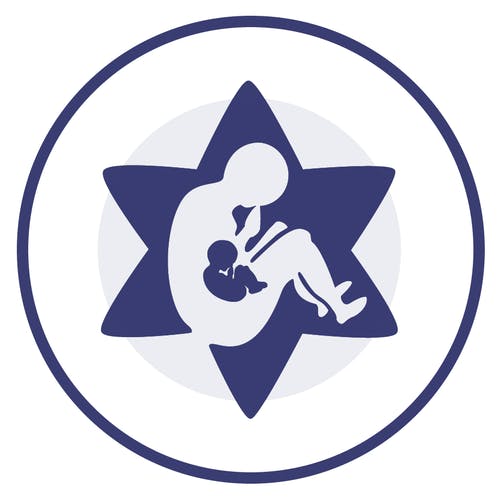Cart
Be’ad Chaim - Gardens of Life blossoms in Israel
May 21, 2020 • By Be'ad ChaimTucked away in the tranquil and peaceful setting of the Latrun Forest, gently nestled in the Judean foothills between Jerusalem and Tel Aviv, is Be’ad Chaim’s Gardens of Life.
The Gardens of Life (Ganei Haim in Hebrew) serves as a memorial for unborn children, babies who were either miscarried, aborted, stillborn or lost for some other reason. It is a holy place, a unique space where people are able to receive comfort, mercy and healing, and remember the lost little lives.
KNI met there with Sandy Shoshani, the national director of Knesset-recognized Be’ad Chaim (Pro-Life). In the undisturbed setting of evergreen and deciduous trees under the warm autumn sun, Shoshani told us about the registered Israeli non-profit organization dedicated to the protection of mothers and unborn children, and the history and need for these Gardens.
In 2009, Be’ad Chaim founder Tony Sperandeo met with the French-speaking Trappist Monks of the Latrun Monastery. Even though the priests keep their speech to a strict minimum, they expressed interest to the French-speaking Sperandeo that they wanted to help stop abortion in Israel. They desired to make a difference in the country and agreed to rent their property to Be’ad Chaim indefinitely with the purpose of facilitating the healing of people who have suffered the loss of a child. With much rejoicing, the gardens were opened and dedicated in 2010.
The beauty of the Gardens of Life lies beyond what is physically visible. This is evident as Shoshani takes us on a tour. Pointing to the hewn rock stairway and rockery at the main gate she noted, “This is normally all purple, there are tons of wildflowers after the rainy season, but, it has been a long, hot summer.”

The rustling of the breeze in leaves of the trees and the wild grasses whisper the promise that the cooler, rainy season is on the way.
As we enter, we can see an already established olive grove that the monks planted on the land many years ago. Shoshani told us that the rest of the 16 dunams — almost 4 acres — was in desperate need of a makeover. Many more varieties of trees have since been planted in the gardens and other upgrades have been incorporated.
“The border of the Gardens is Cyprus trees. We chose to put a living border — as a memorial,” Shoshani described the landscaping decisions. “There are around 1,500 Cyprus trees, give or take, and inside the framework of this border, in strategic locations in the Gardens, there are prayer benches with Bible verses.”
Shoshani explains that each tree is symbolic of healing and they intentionally do not put names or plaques for the babies because this is not a cemetery or an official memorial site for those who have died. This is specifically the place to remember life and a place for people to heal.
“Our organization used to be identified as the organization for the protection of the unwanted pregnancy but we changed that word to ‘unexpected’ as no baby is unwanted by God,” she explained.
Shoshani continued.
“On the one hand, the Gardens are a place to heal the broken hearted who have lost a baby. On the other hand you are also, in a greater sense, acknowledging that the baby is a human being the minute you are remembering a baby that is unborn. You are creating a reality not using euphemisms such as ‘it was just a bunch of cells.’”

As we walk through, Shoshani shows us the special section of the Gardens dedicated to fruit trees. This includes citrus, pomegranate and figs that all bear fruit in season. The olives are almost ready to harvest and Shoshani explains that they are considering using the olive press at the Latrun Monastery to make anointing oil from these special Gardens of Life olive trees.
A gardener maintains the property and a very specialized irrigation system utilizes recycled water. The pond not only contributes to the pastoral setting, but is also a reservoir that collects the “gray water” that is used to water the trees. In addition to helping save and respect human life, the Gardens show respect to the environment too.
Shoshani told us of a fire three months ago which burned a large area around the Gardens and about 20 of their trees too. The trees that could not be salvaged have been replaced with new saplings. Others were heavily pruned and the subsequent new growth is encouraging to see.
Groups and individuals of all ages come from all over the world to volunteer and help maintain the large tract of land and keep it clean. Many of them find healing for themselves as they give of their time and energy. Shoshani points out the place under a natural canopy formed by a giant tree.
“This is the place where I usually meet with people and we can have prayer or worship, talk to groups share and hear their stories. We help everyone. Jew and non-Jew alike, all people groups,” she said. “The only thing we differentiate by color is our laundry.”
The Gardens’ three gates are artistically done with welcoming signs. Prayer benches with ceramic scriptures are strategically placed in shaded areas. A focal point is a statue donated and sculpted by artist Henny van Hartingsveldt who comes from a non-profit organization in the Netherlands.
Shoshani said this work of art can be interpreted in many ways.
“I think the statue depicts the hand of God holding up life. The arms seem to come from the dearth and into light, holding up light. The growing baby is not fully covered by the hands and that is the reality.”
She continued.
“The baby is held up by God’s hand, he strengthens the baby, but the baby is not fully protected yet.”
“We need to remember all the babies that were not fully protected even though God has created them in His image,” Shoshani concluded.
“And the LORD will continually guide you, And satisfy your desire in scorched places, And give strength to your bones; And you will be like a watered garden, And like a spring of water whose waters do not fail.”
Isaiah 58:11

By Dee Catz. This article originally appeared on Kehila News, October 22, 2017, and was reposted with permission.
